The skills that equestrian guides need to have
By: Nestor Imberti Posted: 03/12/2021
Ampascachi sonly offers horse riding holidays in Argentina.
Horse culture is part of Argentina’s traditions.
Exploring this country on horseback is an unforgettable experience.
When we book a horseback riding vacation, there are several aspects to take into account. A very important one is the trail ride leader or guide. Their professional experience is key.
Not anyone can be a horseback riding guide. You must have the ability to react to any setback during the ride and find a quick solution to reassure the riders in the group.
Besides, the guide should have an in-depth knowledge of the area you are going to explore. And in the case of local guides, you will be able to experience the essence of the place, too.
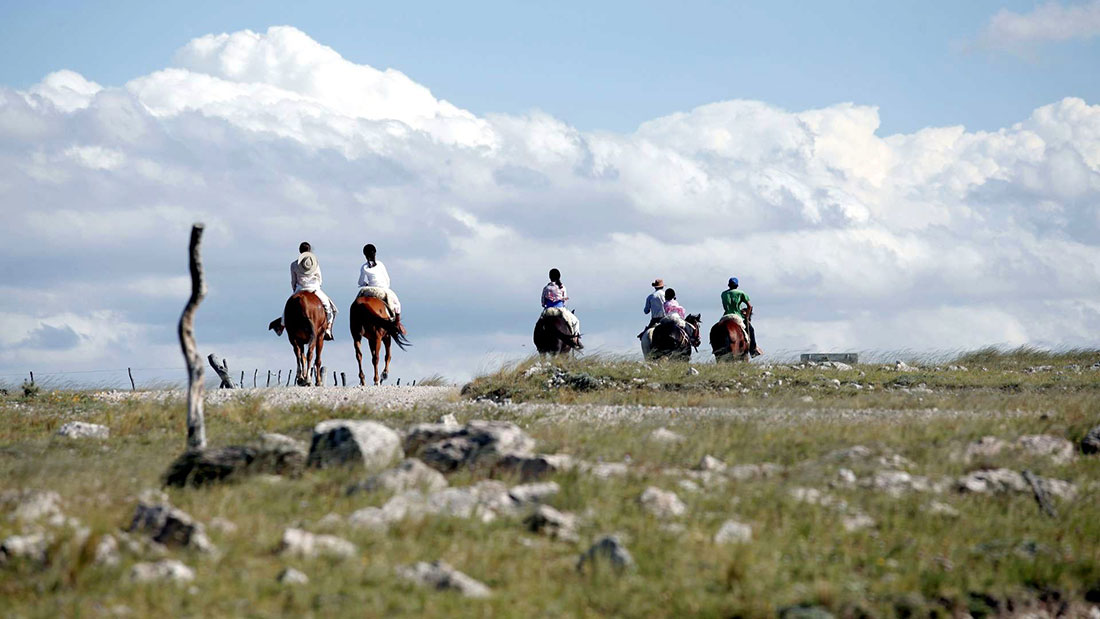
To work as a professional equestrian guide or ride leader, you need to get certified first. There are different training courses on the market to become a good Equestrian Guide.
This certification is regulated in several countries such as Germany, the United Kingdom and France. For example, in Spain this Certificate of Professionalism is recognized as “Guide for equestrian itineraries in nature”.
Another aspect to take into account is whether the guide speaks our language or not. Otherwise, we will need a translator to communicate.
This is the case with Carmela and Homero, our guides, who know all our rides perfectly well.
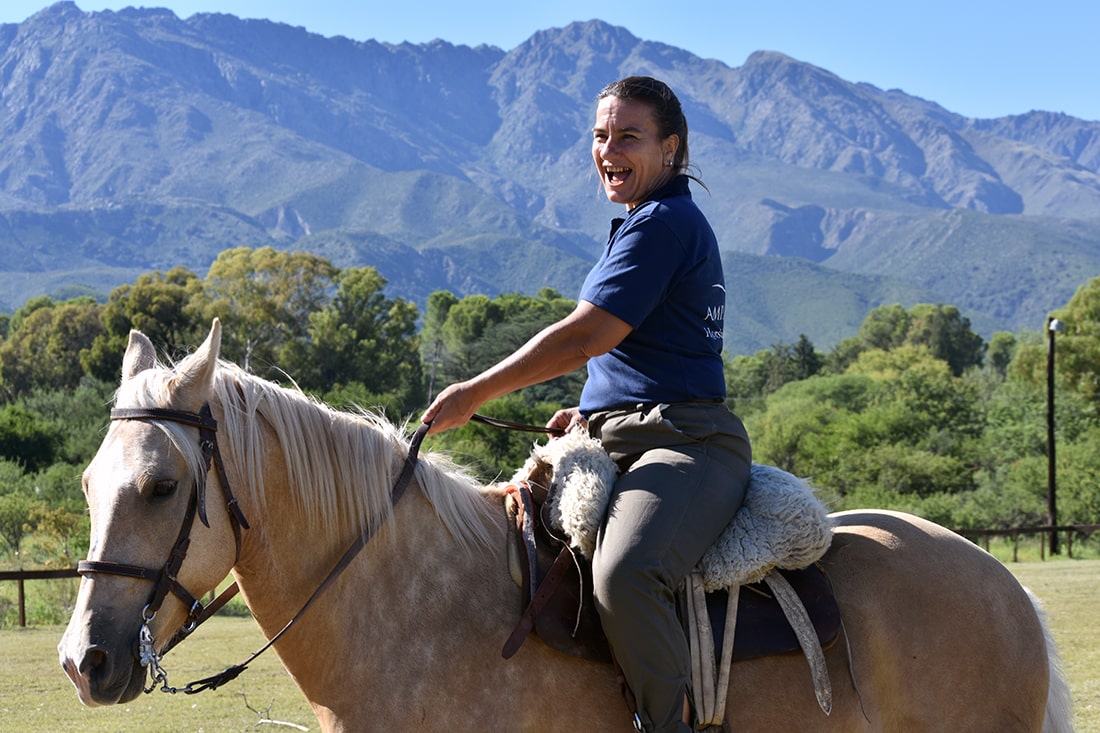
Carmela Flores, equestrian guide at Ampascachi Horse Riding Holidays
Depending on the type of ride, in addition to the guides, other staff members may include cooks, drivers or grooms.
At Ampascachi, there is Ramón, our Baqueano, who is very knowledgeable about horses and the geography of the provinces of Córdoba, Salta, Jujuy, Mendoza and San Juan. Ramon always knows how to get where he wants to go. That's why we’ve nicknamed him “Human GPS”.
Before starting a new stretch of the itinerary, there are many aspects that equestrian guides must have under control and they make sure that everything is ready (all the necessary documentation, for example).
That’s why they must plan the ride thoroughly before leaving.
Now, we will further discuss the duties and responsibilities of equestrian guides on any horseback riding vacation.
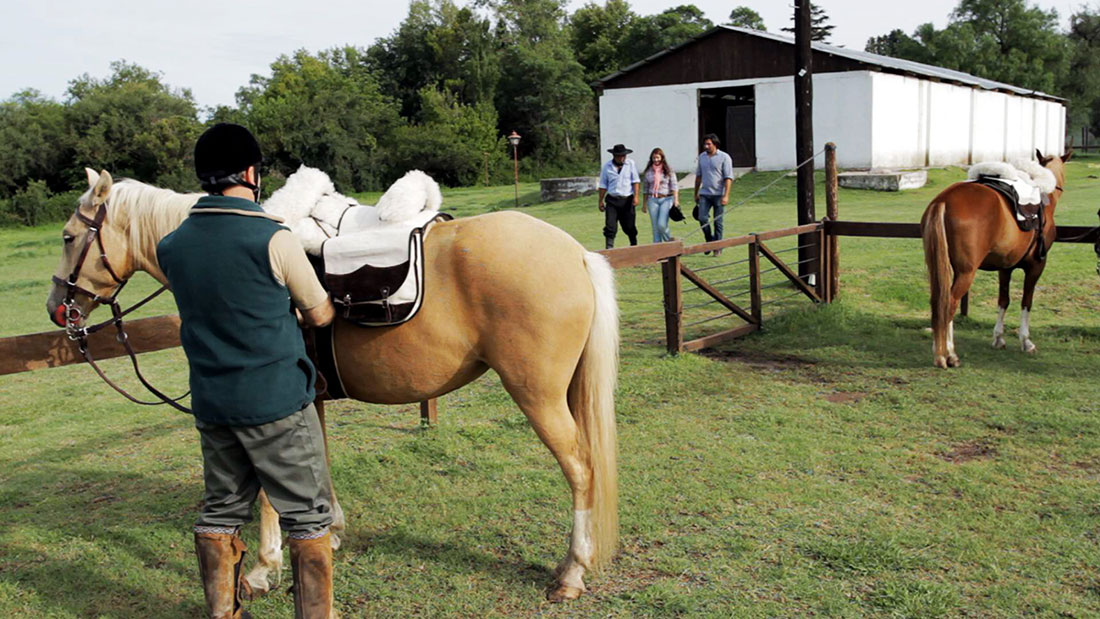
Preparing the horses
In any riding tour, the first thing that the trail ride leader must check is that the expedition horses are well cared for and physically prepared for that ride.
Choosing the right horses before going out on the trails is very important so that riders can enjoy a pleasant experience.
Although the guide may not be the owner of the horses, and therefore welfare before the ride is not the guide’s responsibility, he or she will have to make sure that the horses are in good physical condition, and check whether a horse is lame or injured, for instance.
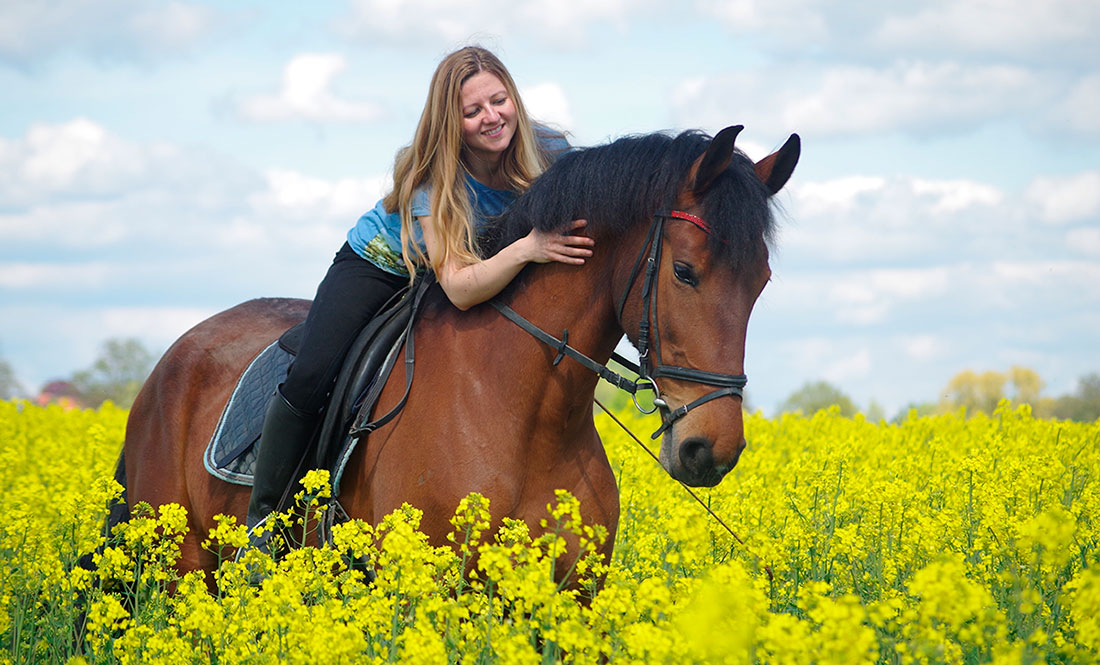
The guide also has to make sure that the trail riding gear is the right one. This includes head stalls, bridles, bits, girths, saddles, blankets, saddlebags, breastplates, etc.
Guides must also carry a valid health certificate for each horse, according to the regulations in force in the different parts or countries you are going to visit during the ride.
The guide must also check that the owner of each horse and the riders have insurance coverage against possible accidents.
Would you like to be part of a group with an equestrian soul?
Join the Ampascachi Community. Obtain exclusive benefits for your holidays.
We tell you how to start, train and take care of your horse.
Interviews with direct providers of riding tours around the world.
Opinions of outstanding equine scientists and personalities in the equestrian sport world.
Recommendations for riders
Before the ride
Riders have to be informed in advance of the equipment they must bring for the equestrian trip and the specific guidelines they need to follow.
These are the basic elements that riders will need and that the equestrian guide will check:
- Riding helmet: It guaranties the physical integrity of the rider.
- Boots or ankle boots: This footwear is necessary for trail riding, especially those boots that protect your legs from snake bites.
- Hats: It is very advisable to wear them when you get off your horse and take a long break (i.e., lunch) under the sun.
- Socks: Thigh-high socks protect your skin from rubbing directly against your footwear. In winter, you will need thick socks to keep your feet warm, while in summer you can wear thin ones.
- Jackets: Are important in winter to protect yourself from cold weather. In summer, a long-sleeved shirt is ok.
- Sunscreens and moisturizers: It’s important to apply them to your face, hands and arms on very sunny days. Besides, creams prevent dry skin.
- Trousers: If you don’t have riding breeches, leggings or tight-fitting jeans will do.
- Gloves: to avoid chafing from holding the reins.

The day of the ride
On this day, the equestrian guide will explain the guidelines that all riders should take into account before the ride:
- How to adjust the girth and find the right stirrup length.
- How to sit in the saddle correctly.
- How to hold and use the reins.
- How to properly place saddlebags, among other things.
Another responsibility that equestrian guides have is finding the right horse for each rider. They must take into account different factors, such as the rider’s height, weight and skill level, and the size and temperament of the horse.
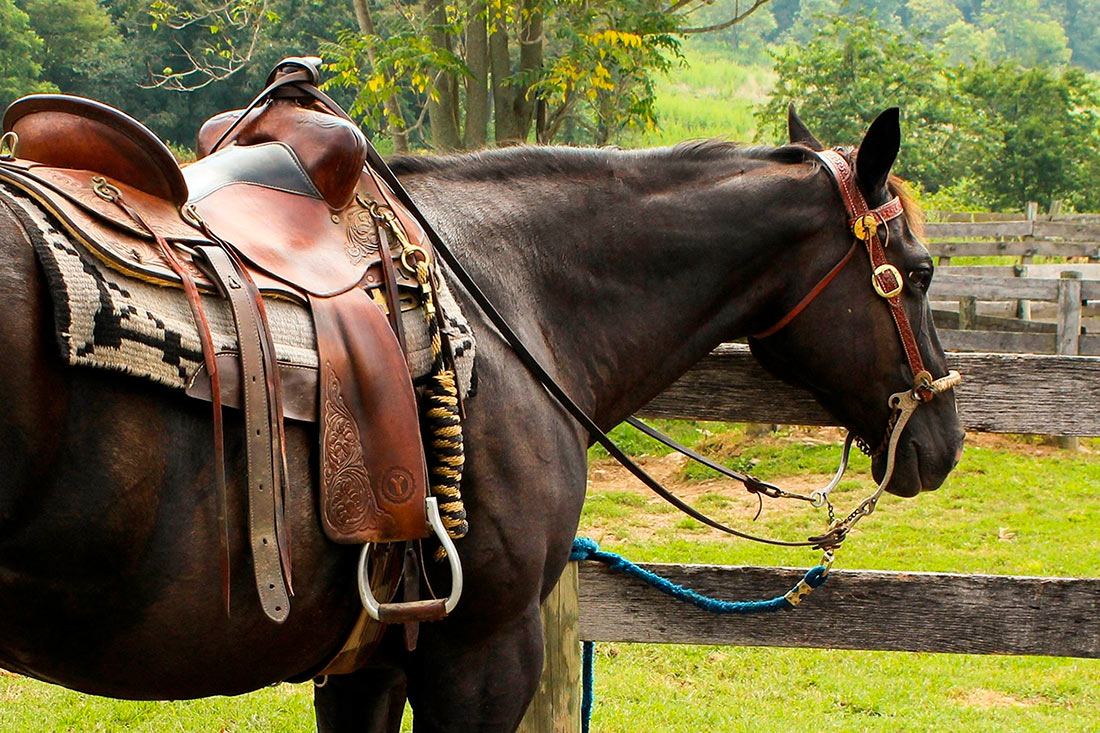
Planning a horse riding holiday
First of all, guides have to make sure that all riders have the required skill level for the ride they intend to take.
If any of the participants lacks the appropriate skill level for the intended ride, the guide must tell them that they will not be able to join the rest of the group, because their own safety may be compromised.
In that case, riders can join another group, one that matches their level and includes a more suitable itinerary.
Likewise, the guide will set the pace of the ride for each of the sections of the route, taking into account the riders’ level and the difficulty of the terrain. The guide will tell us where we can gallop or trot, and where we should ride at the walk in order to enjoy the panoramic views along the way.
Another aspect to consider is the horse’s own experience and training. The guide must know the trail horses perfectly and establish the ride position for each of them (i.e., which horse should go first and which should be at the back), based on the personality, temperament and skills of each horse in the group.
In this way, some horses prefer to take the lead, so it’s preferable to let them be in front, especially when we ride along narrow trails.
Some horses may also develop the bad habit of kicking out at other horses. In this case, it is advisable to have them at the back and ask riders to keep, at least, one horse-length between horses (measured from the muzzle to the tail).

Safety distance between riders
Apart from that recommendation, it is important to maintain a minimum safe distance. Therefore, if a horse stumbles and falls, it won’t get run over by the one coming behind.
The guide must plan where to take one or more breaks, especially to allow horses to drink. Riders will also need to rest, eat, etc.
These are a few examples of all the details that should be worked out by the trail ride leader and that every participant should take into account.
Subscribe to the Ampascachi Community and obtain benefits and exclusive content. Furthermore, we offer free advice on horses and equestrian tourism.
Skills of a good equestrian guide
As we discussed at the beginning of this article, there’s a series of skills that any equestrian guide must master.
Cultural knowledge
A good equestrian guide will be able to explain the local culture and give you other insights about the countries and places you visit during the ride.
As the founder of Equitours Worldwide Riding Vacations, Bayard Fox, puts: "With a good equestrian guide, you can relive history and enjoy a great cultural experience".
Equestrian guides should be acquainted with local culture, legends and traditions.
During the rides, they will pass on this knowledge to the riders.
Language skills
Speaking multiple languages is always valued and it helps build trust.
If a guide is fluent in your language or another language that you speak, communication will be much easier during the whole expedition.

Knowledge of local biodiversity
Guides’ insight into local wildlife and plants is essential. They should know the names of native plant and tree species.
They should be able to identify and describe the animals we may come across during the horseback trek. Our riding experience can be richer if we learn about bird, mammal and insect diversity. If you are told the names of the animals you see, you will surely remember them better.
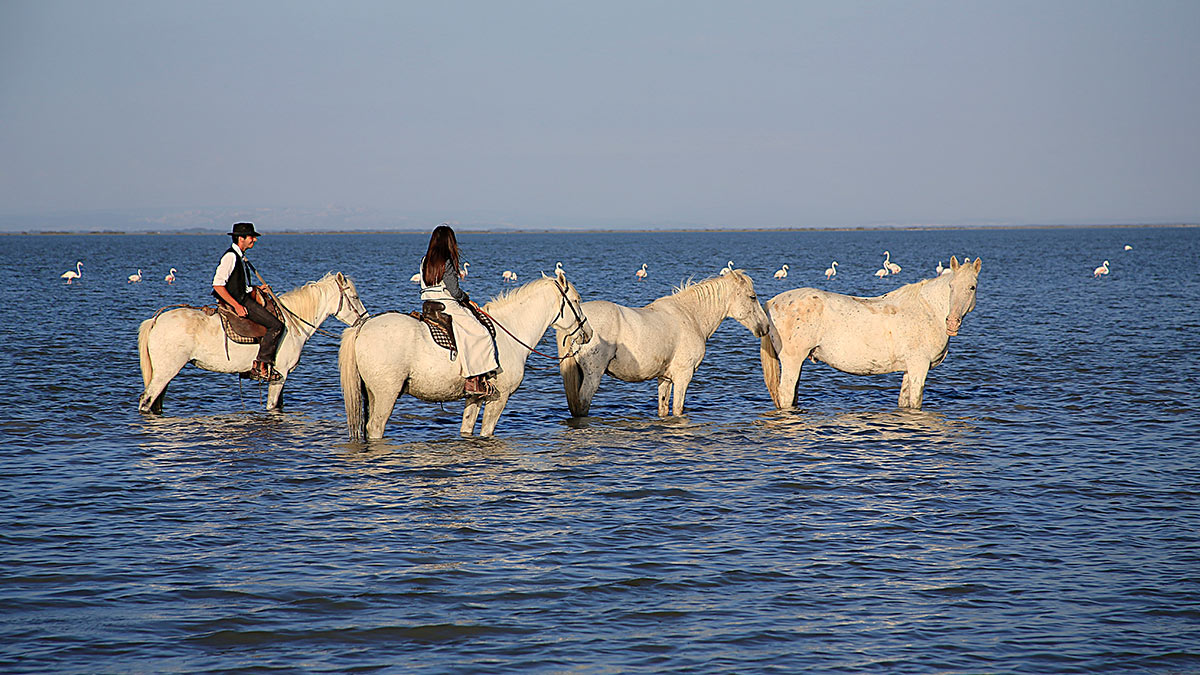
Basic first-aid training
First-aid training for equestrian guides is essential to ensure the safety of the riders.
Knowing what to do and how to assist persons in an emergency situation is vitally important. This way, we can prevent possible complications and speed up their future recovery.

In brief
An equestrian guide’s skills may be based on formal training or personal experience as a rider. One way or another, guides need to fulfil a number of important requirements. They must be able to:
- Map out the trails.
- Master the basic horse riding techniques.
- Manage all physical and welfare aspects of a horse.
- Safely guide riders through areas with diverse terrain.
- Ensure respect for the environment throughout the ride.
- Give first aid to riders in case of accident or emergency situation.
- Adapt to any type of rider and provide top-notch service.
At Ampascachi, our equestrian guides have decades of experience with horses and they have a deep knowledge not only of the specific itineraries, but also of the areas we travel around, their tourist attractions and the gaucho culture.
You can trust our guides. They will take you on a safe and fun horse riding holiday around Argentina, always in an environmentally friendly way.
Thinking about a horse riding holiday but don’t know how to book it?
Download our free eBook "How to plan your next horseback trip" and learn all you need to know when choosing the right holiday and outfitter for your next equestrian adventure.
~
THIS COULD ALSO BE INTERESTING

Tips for your horse riding holidays
What you should have in mind when planning your riding holidays: tips for your luggage and equipment, which precautions to take, travelling in group and accommodation.
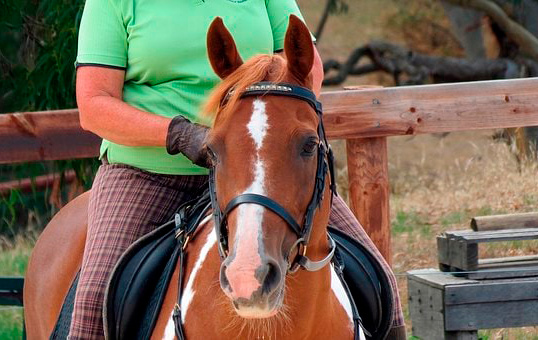
How much weight can a horse carry safely?
A very important question is how much weight can a horse carry without causing any damage over time. Some studies give us the answer...
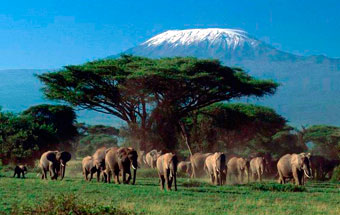
Horseback Safaris in Kenya
Horseback safaris in Kenya are some of the most exciting adventures in Africa! Go for a safari tour and ride trough vast extensions, surrounded by national parks!
~
WHAT IS YOUR OPINION? LEAVE A COMMENT
Planning your horse riding holidays?
Join the Ampascachi Community. You will get exclusive advantages and guidance for your next horse riding holiday.


 German
German French
French Spanish
Spanish